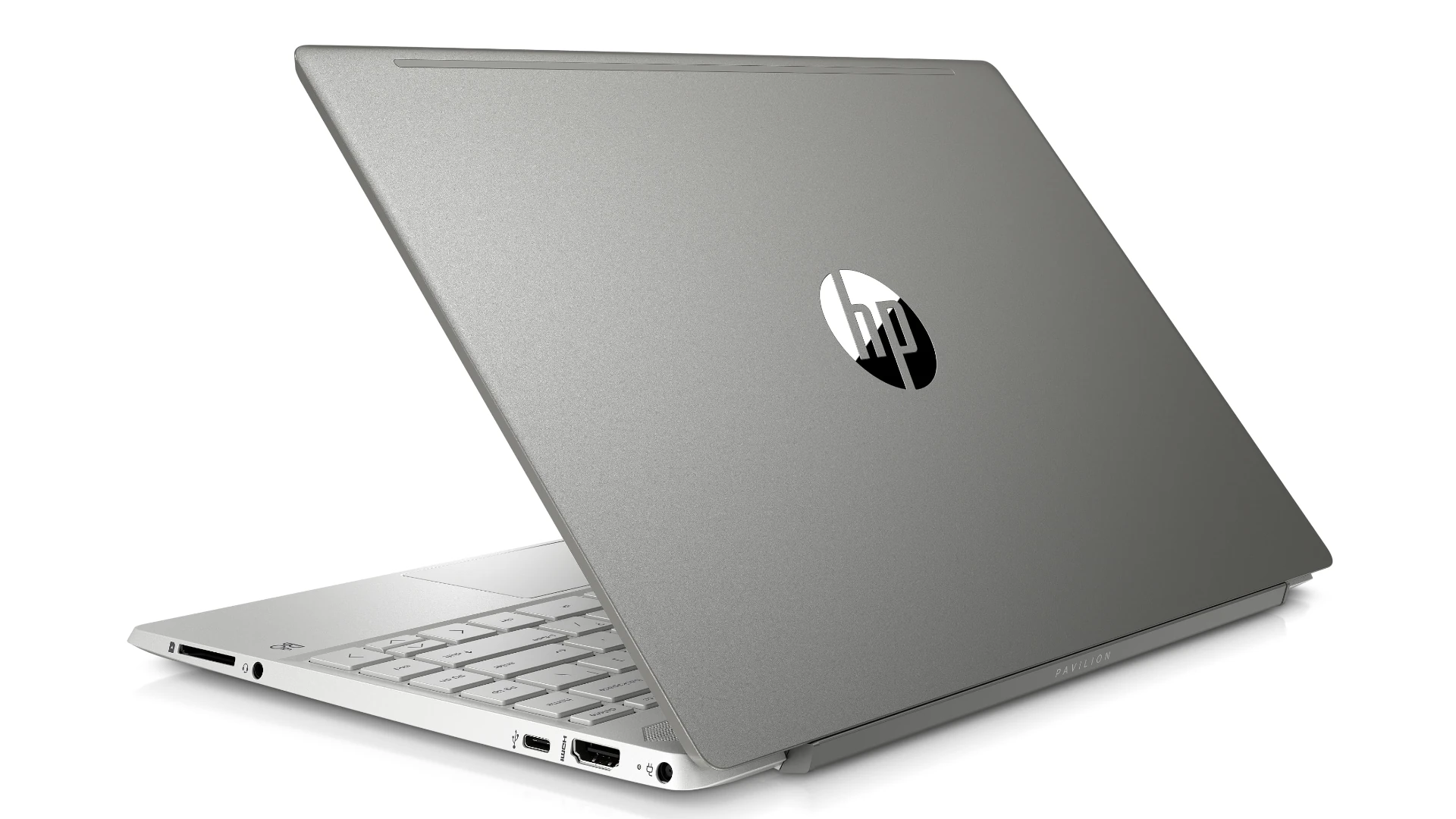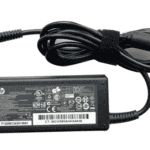Finding your HP laptop won’t turn on can be frustrating, especially when you need it for work or school. This common problem can happen for many reasons, from simple power issues to more complex hardware failures. The most important first step is to check your power supply and battery to make sure they’re working properly.
If your laptop shows some signs of life—like power lights coming on—but the screen stays black, you might be dealing with a display issue rather than a power problem. Many HP laptop problems can be fixed with simple troubleshooting steps like performing a hard reset, which involves holding down the power button for 15-20 seconds after disconnecting all power sources.
Before assuming the worst, try removing any external devices connected to your laptop. Sometimes, these devices can interfere with the startup process. Also, check if the battery is seated properly if your model allows for battery removal. These quick checks can often solve what seems like a serious problem in just a few minutes.
Step 1: Perform a Basic Power Reset
Before diving into any deep troubleshooting, start with a basic power reset. This clears any residual charge that might be interfering with the hardware startup.
- Disconnect the charger.
- Remove the battery (if your model allows it).
- Press and hold the power button for 15–30 seconds.
- Reinsert the battery and connect the charger.
- Try powering on the laptop again.
If your HP laptop is still not turning on, don’t worry—this is just the beginning of the process.
Step 2: Check for Signs of Life
Look closely for any signs the laptop is trying to power on:
- Is the power light on? If the power LED turns on briefly, that could point to a motherboard or RAM issue.
- Fan spinning or any noise? If fans start but nothing shows on screen, it might be a display or GPU problem.
- Keyboard backlight or caps lock LED blinking? This can indicate a specific error code—HP laptops often use blink codes to report hardware issues.
If the laptop is completely dead with no lights, move on to the power source.
Step 3: Inspect the Power Adapter and Charging Port
A bad charger or loose charging port is a common culprit:
- Test a different wall outlet. Obvious but often overlooked.
- Examine the charging cable and brick. If the power brick is making clicking sounds or getting unusually hot, it might be faulty.
- Check for damage on the port. Wiggling the plug gently while watching the power LED may reveal a loose connection.
If you have access to a multimeter, test the charger’s voltage output to confirm it’s delivering power.
Step 4: Try a Hard Reset Without the Battery
If your HP laptop has a removable battery, try starting it with just the charger plugged in:
- Remove the battery completely.
- Plug in the power adapter only.
- Try turning it on.
Conversely, if the battery is internal and you feel comfortable opening up the laptop, disconnect the battery from the motherboard and then plug in the charger to test startup behavior.
Step 5: Test with an External Display
Sometimes the laptop is running but the screen is black. To rule out display failure:
- Connect your laptop to an external monitor or TV via HDMI or VGA.
- Power on the laptop.
- If nothing shows up, try pressing F4 or Fn + F4 to toggle between internal and external display modes.
If the external screen shows activity, your internal display, cable, or GPU may be the issue.
Step 6: Reseat the RAM
Loose or improperly seated RAM can prevent your laptop from starting:
- Power off and unplug the laptop.
- Open the back panel (you may need a small screwdriver).
- Locate the RAM module(s), release them, and reseat firmly back in place.
- Close the case, reconnect power, and try again.
If your laptop has two RAM sticks, try booting with one stick at a time in different slots to identify faulty modules or slots.
Step 7: Remove All Peripherals
A USB stick or external drive can sometimes cause the laptop to hang on boot. Disconnect everything:
- USB devices
- SD cards
- External monitors or keyboards
Then try powering on. A simple device conflict or boot priority issue could be the holdup.
Step 8: Check for BIOS or Firmware Issues
If your HP laptop powers on but doesn’t go past a black screen, it could be stuck in a bad BIOS state. HP laptops often include a built-in BIOS recovery method:
- With the laptop powered off, hold Windows + B and then press the power button for a few seconds.
- Keep holding Windows + B until you see the BIOS recovery screen.
This doesn’t work on all models, but it’s worth trying before opening the laptop further.
Step 9: Disconnect the CMOS Battery
The CMOS battery keeps your BIOS settings stored. If it’s glitched or corrupted, your laptop might not boot.
- Open the laptop’s back panel.
- Find the small circular battery on the motherboard (similar to a coin cell).
- Gently disconnect it for about 5 minutes.
- Reconnect and try powering on.
This resets the BIOS settings, which can resolve boot issues caused by misconfigured firmware.
Step 10: Listen for Beep Codes or LED Blinks
HP laptops have built-in diagnostic indicators:
- Beep codes (on older models)
- Blinking LEDs, usually from the Caps Lock or Num Lock keys
Each pattern points to a specific issue—RAM failure, CPU issues, or motherboard faults. Look up the exact blink pattern in HP’s official documentation or support forums based on your laptop’s model.
When to Seek Professional Repair
If none of the above steps work and the laptop remains unresponsive, it could be a deeper hardware issue involving:
- Faulty motherboard or CPU
- Burned out power IC
- Shorted components on the board
- Corrupted BIOS chip
At this point, repair shops can test voltages, components, and chips at the board level—something that’s not usually possible at home without special tools.
Even if your HP laptop seems completely dead, it’s rarely without a fix. Most issues stem from power delivery, RAM seating, or BIOS glitches—all of which can be resolved at home with a bit of care.
Key Takeaways
- Check power connections and try a hard reset by holding the power button for 15-20 seconds with all power sources disconnected.
- Look for signs of life such as power lights or fan noise, as these indicate different problems than a completely dead laptop.
- Remove external devices and check if the battery is properly connected before seeking professional help.
Preliminary Checks
Before diving into complex troubleshooting, it’s important to check some basic issues that commonly prevent HP laptops from turning on. These simple checks can often resolve the problem without technical expertise.
Assessing Power Source Issues
First, verify you’re using a working power outlet. Try plugging another device into the same outlet to confirm it’s functioning properly. Sometimes, the problem isn’t your laptop at all, but rather the power source.
Check if your laptop has a Power button light. If it’s completely dark when pressed, this often indicates a power delivery problem. For laptops with removable batteries, try removing the battery and connecting only the AC adapter, then press the Power button.
Some HP models require you to hold the Power button for about 15 seconds to reset internal power circuitry. This simple action can sometimes restore power to a laptop that seems dead.
Evaluating the AC Adapter and Battery Health
Inspect your AC adapter for physical damage. Look for frayed wires, bent connectors, or burn marks. The connection point where the adapter plugs into the laptop is especially vulnerable to damage.
Test the adapter with a different compatible HP laptop if possible. Alternatively, try using a known working adapter with your laptop. AC adapters can fail without showing visible signs of damage.
For laptops with removable batteries, remove the battery and examine it for bulging or leakage. A damaged battery can prevent power flow. Try running the laptop on just AC power without the battery installed.
Battery health naturally declines over time. If your laptop is several years old, the battery may need replacement even if it looks fine physically.
Basic Troubleshooting Steps
When your HP laptop won’t turn on, there are several simple fixes you can try before seeking professional help. These steps can save you time and money by solving common power issues that many laptop users face.
Performing a Hard Power Reset
A hard power reset can fix many problems when your HP laptop won’t start. First, remove the laptop’s battery if possible. For models with internal batteries, skip this step. Unplug the power adapter from the wall and your laptop.
Press and hold the power button for at least 30 seconds to drain any remaining power. This helps reset the hardware components inside your laptop.
Reconnect the battery if you removed it. Plug the power adapter directly into a wall outlet (not a power strip). Try turning on your laptop now. If it still doesn’t work, try a different power outlet or adapter if available.
HP laptops sometimes develop power issues that can be fixed with this simple reset. The process clears temporary hardware states that might be preventing your laptop from starting normally.
Booting in Safe Mode
Safe Mode starts your laptop with minimal drivers and programs. This can help determine if software is causing the problem. To enter Safe Mode on an HP laptop, first try to power on the device.
If you see any sign of life (like flashing lights), immediately press F8 repeatedly. On Windows 10 systems, you might need to hold Shift while clicking Restart when the laptop is on.
In Safe Mode, check for recent software installations or updates that might be causing problems. You can uninstall them or restore your system to an earlier point.
If your laptop works in Safe Mode but not normally, the issue is likely software-related. This might be a driver conflict or corrupted system files that prevent normal startup.
Testing With an External Monitor
Sometimes the laptop is actually running, but the screen isn’t working. Connect your HP laptop to an external monitor using HDMI, VGA, or DisplayPort connections.
Turn on both the laptop and monitor. Press the key combination (usually Fn + F4 or similar) that switches display output. Look for any image on the external screen.
If you see content on the external monitor, your laptop’s screen or display cable might be faulty. Listen for fan noise or look for power lights to confirm the laptop is running.
No image on the external monitor suggests a deeper hardware problem. Check that the brightness isn’t turned all the way down on both displays before assuming the worst. External monitors can help pinpoint whether the issue is with the screen or the laptop’s core functions.
HP Specific Solutions
HP laptops have unique troubleshooting tools and solutions when they won’t turn on. These manufacturer-specific approaches can often fix problems that general solutions can’t address.
Utilizing HP Diagnostic Tools
HP provides built-in diagnostic tools to test hardware components when your laptop won’t start. The HP PC Hardware Diagnostics tool can check if specific parts are causing the problem.
To access these tools:
- Turn off your laptop completely
- Press the Power button + F2 key simultaneously
- Select Component Tests from the menu
The diagnostic tool will test your:
- Battery health
- Hard drive function
- Memory performance
- Processor operation
These tests help identify which part might be causing the startup problem. Some HP models also have a Quick Test option that runs a basic check of essential components in just a few minutes.
Results from these tests can point to specific hardware that needs repair or replacement. Make note of any error codes, as they’re helpful when contacting HP Support.
Restoring the BIOS
BIOS problems often prevent HP laptops from starting. Restoring the BIOS to default settings can fix this.
Try these steps:
- Turn off your laptop completely
- Press and hold the Windows + B keys
- While holding these keys, press the power button
- Keep holding the keys until you hear a beeping sound or see the HP logo
This process resets the BIOS to factory settings. If your laptop has corrupted BIOS settings, this often solves the problem.
For older HP models, you might need to:
- Remove the battery (if possible)
- Hold the power button for 30 seconds
- Replace the battery and try turning it on
If your laptop still shows only the HP logo but doesn’t progress, try disconnecting all external devices first. Sometimes USB devices can interfere with the boot process.
Updating the BIOS
An outdated BIOS can cause startup failures on HP laptops. Updating to the latest version might solve the problem.
To update your BIOS (if you can access Windows):
- Go to HP’s support website
- Enter your laptop’s model number
- Download the latest BIOS update
- Follow the installation instructions carefully
If your laptop won’t turn on at all, you’ll need:
- Access to another computer
- A USB flash drive
- The BIOS update file for your specific model
Create a bootable USB with the BIOS update, then:
- Insert the USB drive into your non-working laptop
- Press and hold the Power + Esc + F10 keys
- Select the USB drive from the boot menu
- Follow on-screen instructions
Be extremely careful when updating BIOS. If interrupted, it can permanently damage your laptop. Always connect to power during BIOS updates to prevent battery failure mid-update.
Software and Operating System Related Fixes
Sometimes when your HP laptop won’t turn on, the issue is related to software rather than hardware. These problems can range from update errors to virus infections that prevent normal startup.
Running Windows Update
Windows Update issues can cause your HP laptop to get stuck in a boot loop or fail to start properly. If your laptop turns on but won’t boot into Windows, it might be due to a failed or corrupted update.
To fix this problem, you can try booting into Safe Mode by pressing F8 repeatedly during startup. If successful, you can:
- Open Control Panel and go to Windows Update
- Check for failed updates and remove them
- Run the Windows Update Troubleshooter to fix problems automatically
- Try the Windows + B key combination while pressing the power button for 2-3 seconds
This key combination can reset the boot process and help your system recover from update-related issues. For laptops that show signs of life but won’t boot, this is often effective.
Addressing Potential Virus Attacks
Virus attacks can severely damage your operating system and prevent your HP laptop from starting properly. Malware might corrupt essential system files or block startup processes.
If you suspect a virus is causing startup problems:
- Boot into Safe Mode with Networking if possible
- Run a full system scan with your antivirus software
- Use Windows Defender Offline scan (available in recovery options)
- Try System Restore to return to a point before infection
For completely unresponsive laptops, you might need to create a bootable antivirus USB drive using another computer. This lets you scan and clean your system without needing to boot normally.
Checking for Corrupted Software Issues
Software corruption can occur from improper shutdowns, power surges, or failing hard drives. These issues often trigger an “Operating System Not Found” error on HP laptops.
To address corrupted software:
- Use Startup Repair from the recovery environment
- Run Command Prompt and type:
chkdsk C: /f /rto fix disk errors - Use the System File Checker by typing:
sfc /scannowin Command Prompt - Try bootrec commands to rebuild the boot configuration
If these steps don’t work, you might need to reset Windows or reinstall the operating system. Remember to back up your files first if possible, using a bootable recovery drive to access your data.
Hardware Considerations
When your HP laptop won’t turn on, hardware issues might be the culprit. Physical components inside your laptop can fail or become disconnected, preventing normal startup.
Connecting to External Devices
External devices can sometimes cause startup problems with HP laptops. If your laptop won’t turn on, try removing all connected devices such as USB drives, external hard drives, printers, and monitors.
Sometimes these devices draw too much power or cause conflicts that prevent your laptop from starting. After disconnecting everything, hold the power button for 30 seconds to perform a hard reset.
If your laptop starts successfully without external devices, reconnect them one by one to identify which device might be causing the problem. When you find the problematic device, try updating its drivers or connecting it to a different port.
For persistent issues, try booting in safe mode by pressing F8 during startup to see if your laptop works normally without external device drivers loaded.
Checking Graphics Card Functionality
Graphics card problems can prevent HP laptops from turning on properly or cause black screen issues even when the laptop is running. For laptops with dedicated graphics cards, overheating is a common issue.
Listen for fans running at high speed or feel for unusual heat from the laptop’s base. These are signs of graphics card stress. Try placing your laptop on a hard, flat surface to improve airflow.
For integrated graphics, update drivers through the HP Support Assistant if you can boot into safe mode. If your screen stays black but you hear startup sounds, try connecting an external monitor to determine if the issue is with the display or graphics card.
Press Fn + F4 (or the display output button) to switch between display options. If the external monitor works, your graphics card might be functioning while your laptop screen isn’t.
Support and Warranty
When your HP laptop won’t turn on, knowing your warranty status and how to get help can save you time and money. HP offers several support options and understanding your warranty coverage is essential before seeking repairs.
Reviewing Warranty Terms
Most HP laptops come with a standard one-year limited warranty that covers manufacturing defects. This warranty typically includes parts and labor but excludes damage from accidents, misuse, or normal wear and tear.
To check your warranty status:
- Find your laptop’s serial number (usually on the bottom of the device)
- Visit HP’s support website
- Enter your serial number in the warranty checker tool
Some HP laptops might have extended warranties or HP Care Packs that offer additional coverage. These often include:
- Longer coverage periods (2-3 years)
- Accidental damage protection
- On-site service options
Keep your proof of purchase handy, as HP may request it to verify warranty status.
Contacting HP Support
HP offers multiple support channels to help with laptops that won’t turn on.
Phone Support: Call HP’s customer service at 1-800-474-6836 (US). Have your serial number and model information ready. Support hours are typically 8 AM to 9 PM Monday through Friday.
Online Support:
- Visit HP’s support website
- Use HP’s Virtual Agent for basic troubleshooting
- Access the HP Support Community forums where other users might have solved similar issues
Chat Support: Live chat is available on HP’s website for immediate assistance without waiting on the phone.
For serious hardware failures, HP might arrange for mail-in repair service or direct you to an authorized service center. If your laptop is under warranty, these repairs are usually covered at no additional cost.
Additional Resources
Finding the right help when your HP laptop won’t turn on can save you time and frustration. These resources can guide you through troubleshooting steps or connect you with experts who can solve your problem.
Referencing User Manuals
HP provides detailed user manuals for all laptop models. These manuals contain specific troubleshooting steps for power issues. You can find your laptop’s manual on HP’s official website by entering your product serial number.
The manual typically includes:
- Model-specific power button locations
- Battery removal instructions
- Hard reset procedures
- LED indicator explanations
Many manuals also feature diagrams showing proper power adapter connections. For older laptop models, you might need to search HP’s support archives. Some manuals offer QR codes linking to video tutorials that demonstrate power troubleshooting steps.
Exploring Online Communities and Forums
Online communities offer practical solutions from other HP laptop users who’ve faced similar power problems. The HP Support Community hosts thousands of discussions about laptops that won’t turn on.
Other helpful forums include:
- Reddit’s r/techsupport and r/HP_laptops
- Tom’s Hardware forums
- Microsoft Community for Windows-related issues
When posting in these communities, include your exact laptop model, age, and symptoms. Photos of any error lights can help others diagnose your problem. Many experienced users share step-by-step fixes that aren’t covered in official documentation.
Tech enthusiasts in these forums often provide creative solutions for common power issues based on real-world experience.
Frequently Asked Questions
HP laptop power issues can be frustrating, but most problems have straightforward solutions. Here are answers to common questions about HP laptops that won’t turn on.
Why does my HP laptop display a black screen when I attempt to power it on?
A black screen on startup often indicates a display problem rather than a power issue. Try connecting your laptop to an external monitor to determine if the laptop is working but the screen isn’t.
The issue might also be related to corrupted system files. Remove the battery (if possible), disconnect the power adapter, hold the power button for 30 seconds, then reconnect everything and try again.
Sometimes outdated display drivers cause this problem. Boot into Safe Mode by pressing F8 during startup to update or reinstall your graphics drivers.
What should I do if my HP laptop does not start despite the power light being on?
When the power light is on but nothing happens, try a hard reset. Disconnect all external devices and the power adapter.
Remove the battery if possible, then press and hold the power button for 15-30 seconds. This discharges residual electricity and can resolve minor software glitches.
Check if the fan is running or if you hear any beeping sounds. These provide clues about potential hardware problems that need professional attention.
How can I troubleshoot an HP laptop that won’t turn on despite the fan running?
If the fan runs but there’s no display, your laptop is receiving power but having trouble booting. Try removing and reseating the RAM modules.
Connect to an external monitor to check if the display is the problem. Press the power button and look for signs of activity on the external screen.
Reset the BIOS by removing all power sources and holding the power button for 30 seconds. Then press and hold the Windows key + B while powering on the laptop.
How can I resolve an HP laptop that won’t turn on, and the power light keeps blinking?
Blinking power lights often indicate a hardware problem. Check your laptop manual for the specific blink pattern, as different patterns mean different issues.
Common causes include RAM problems, overheating, or power supply issues. Try removing the battery and running only on the power adapter.
If the light blinks in a pattern (like 3 short blinks followed by 3 long blinks), check HP’s support website to decode this error signal. This information helps identify the specific hardware component causing the problem.
What are the steps to perform a power reset on an unresponsive HP laptop?
First, disconnect all external devices, including the power adapter. Remove the battery if your model allows it.
Press and hold the power button for 30 seconds to drain any residual electrical charge. This clears temporary issues that might prevent booting.
Reconnect the power adapter only (leave the battery out), and try powering on the laptop. If it boots, shut it down properly, then reinsert the battery and try again with both power sources.
What methods can I try to force start my HP laptop when it won’t turn on normally?
Try the “battery pull” method by removing the battery and power adapter, holding the power button for 30 seconds, then reconnecting only the power adapter and turning it on.
Some HP laptops respond to a specific key combination during startup. Try pressing Fn + B while powering on, which can reset the power controller on certain models.
Check if your laptop has a pinhole reset button (usually on the bottom). Insert a paperclip and hold for 10 seconds, then try powering on normally.







